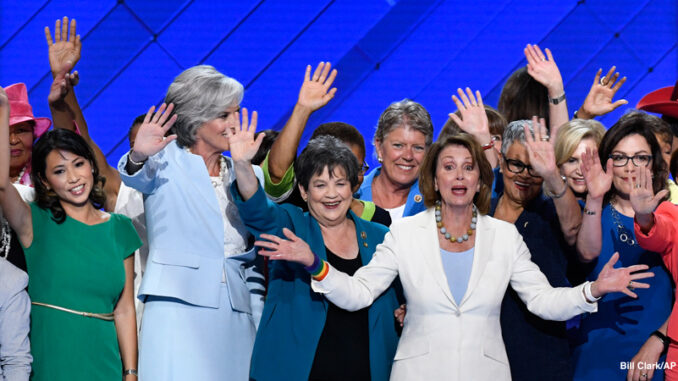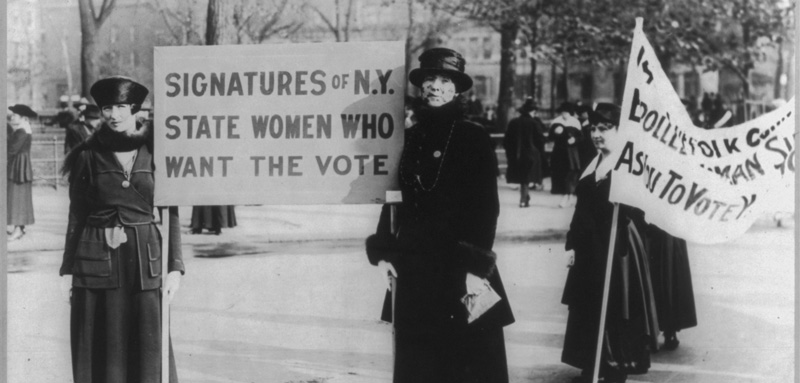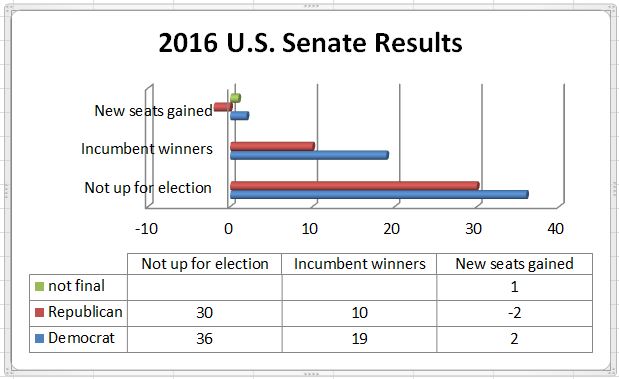
Hillary Clinton is not the only woman who hopes to make history on November 8. The number of women in Congress is likely to reach record highs as well. Female candidates will benefit from running alongside Democratic nominee Clinton, and offensive remarks made by Republican candidate Donald Trump may give women an additional boost as well.
In the Senate, the number of women currently stands at 20 out of 100 seats. However, after the election, there could be as many as 23–the highest number in history. Women could potentially take seats in Illinois, Pennsylvania, North Carolina, Arizona, and Nevada. And in New Hampshire and California, both candidates are women.
In the House, the number of female representatives could rise from 84 to 89 out of 435 seats.
Unequal Gains
These gains, however, are likely to be made by Democratic women, while the number of Republican women in the House is almost certain to decline. This is due to having strong Democrat Hillary Clinton at the top of the ticket, and the fact that women in general tend to vote slightly more Democratic in modern U.S. history.

Obstacles to Change
Despite the fact that women are making gains this election, many argue that this is hardly occasion to celebrate; after all, despite the fact that women make up more than half of the population and have been a majority of the electorate since 1984, they make up less than 25 percent of those serving at every level of government.
It is interesting to note that when women do run for office, they win at roughly the same rate as men. So why are they so underrepresented?
First, women are less likely to be asked to run to begin with, because political recruiters are usually men. Secondly, women are often primary caregivers of their children and frequently postpone entering politics until their children are grown, meaning that they are often older than men when they run for office, and they have shorter political careers.
Minority Gains
Even more underrepresented in government are minority women. So far, Carol Moseley Braun (Illinois) and Mazie Hirono (Hawaii) have been the only minority women to serve in the Senate. However, this election, several minority women are seeking seats in both the House and Senate. In the Senate, Catherine Cortez Masto (Nevada) and Loretta Sanchez (California) are both poised to become the first Latina senator. Kamala Harris (California) would be the first senator with South Asian roots. And in the House, Pramila Jayapal (Washington) could be the first Indian-American woman in Congress.
Though these gains are small, they are at least a step toward changing the face of Congress–historically white, male, and middle-aged–so that it better represents the diversity of the American population.
***
Thursday morning update
As a result of Tuesday’s election the U.S. Senate will have at least 21 women in 2017–up by one from the previous Senate. Among them, Catherine Cortez Masto (Nevada) will be the first Latina senator, and Kamala Harris (California) will be the first senator with South Asian roots. The Senate race in Louisiana is still not official as of Thursday morning.

In the House of Representatives, Pramila Jayapal (Washington) is the first Indian-American woman elected to serve, and Ilhan Omar (Minnesota) will be the first Somali American to be elected to Congress. As more information is gathered, this post may be updated again.
***
